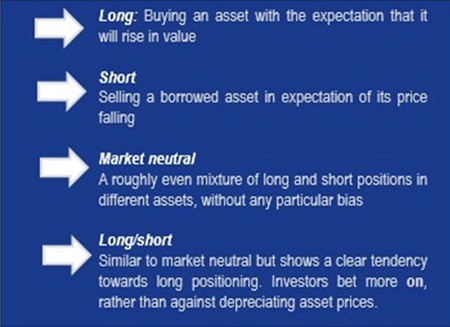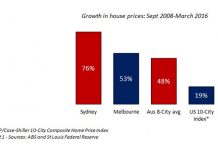With such negative economic prospects, heightened volatility, nervous stock markets, seemingly imploding commodity prices and socio-political upheaval, it may appear that it’s not worth investing right now. But that’s not necessarily the case. It just requires an approach suited to the prevailing situation.
Analysts, policy makers, investors and commentators seem to have become alarmist overnight with ‘a Cassandra on every street corner’. As I’ve mentioned previously1, the Cassandra message may well be proven right; although the timing could be off and it may be for the wrong reasons.

Amidst such chaos and uncertainty, opportunities may not be easy to spot. But wherever there are opportunities to lose, that invariably also creates opportunities to profit. But where can people get some return on their investment?
Firstly, the question is not where? It seems to me that the opportunities out there today are not so much geographical but thematic. So the right question should be how?
I’ve been saying for some time that both long/short and market neutral investors give themselves access to a much wider opportunity set by being able to make money in two ways: investing in assets which are appreciating in price; or betting against depreciating assets.
What does all that mean?
Funds that are more short than long are usually classed as short-biased funds and outright shorting funds are generally classed as dedicated short – the mirror image of long only. Both of these approaches involve betting against the laws of capital market nature – the fact that over time (albeit sometimes a very long time) assets in general have always so far appreciated in value.2 Therefore any short bias is essentially making a directional bet that we will undergo a period of counter long term trend asset price weakness. In a sense, this is all about timing. Timing is notoriously difficult. It doesn’t seem to be any easier in today’s opaque outlook. This is why we’ve tended to favour long/short approaches – the best of both worlds.
Macro portable alpha
Macro because the fund uses macroeconomic views of what’s happening in various countries.
Portable alpha as it is investing in areas which have little correlation with the market.
Definitions: Investopedia
Within long/short, there are different tendencies: some investors have far greater flexibility in their approach; whereas others are more rigid. An example of the rigid versions are the 130/30 funds that were popular for a while – funds which combined a gross long position of 130% with 30% shorts, meaning the same 100% net exposure as a long-only fund.
In general (especially in efficient or, at least, homogeneous markets) more rigid long/short positioning is an alternative to investments such as minimum volatility strategies which, in theory, go up less than the index in bull markets but fall less in weak markets. Another form of rigidity is to adopt a market neutral stance (typically the same amount of long exposure as short exposure, meaning that the actual direction of the markets is not a significant driver or component of returns. In general (again, especially in efficient/homogeneous markets) market neutral is theoretically a tricky area to make a profit, as it’s largely reliant on exploiting market inefficiencies.
Some analysts believe that alpha (i.e. performance against a benchmark, such as a market index) in market neutral and long/short positioning, derives more readily from the short investments. As shorting is an underused strategy, market prices on the short side, especially with the use of synthetic shorts, aren’t nearly as instantly sensitive or reflective as with other positioning.
Of course the concept of efficient markets is that asset prices accurately reflect totally reliable knowledge. However that’s not always the case. In less efficient markets – some emerging markets, for example – it could be argued that there is opportunity to generate more significant alpha, in both long and short positioning.
That’s because, on the long side, some emerging markets-based funds are able to take advantage of mispricing in under-researched, under-bought stocks from the smaller and medium-sized firms on an exchange. Similarly, in inefficient markets, shorting is able to exploit over-pricing in over-researched, over-bought blue-chip companies.
In such markets, the best results might be expected to be achieved by investment funds that have totally flexible mandates that can vary their long and short relative exposures according to the prevailing outlook.3 One such fund that we have covered for a number of years currently holds more investment in cash and short than it does in long stocks. Consequently, such funds move up and down the risk curve according to market conditions – generating what can be called macro portable alpha. This is a strategy which I advised and utilized last year with some success and which still seems to be appropriate for many investors amidst the prevailing uncertainty.4
The real sea change in the last year or so is that previously, what was actually being invested in was perhaps the main focus. Today the investment strategy, how it’s being invested, is paramount.5 This is a change that we all have to adapt to. I say this despite a long track record of successful asset calls, including many that were derided at the time for being too contrarian.
So why change now? Well as Keynes once said “When my information changes, I alter my conclusions. What do you do, sir?”6
What worked well in certain conditions in the past may no longer be the best solution today. It’s important to avoid becoming a slave to one single approach, purely because it has worked in the past. For the reasons I’ve stated,7 this is a very different time now and thus solutions like macro portable alpha should be considered within any asset allocation process.
Of course, any investment strategy contains an inherent level of risk and as I’ll continue to state ad nauseam, this is something that every investor can and should control and ensure that their portfolio risk level remains firmly within their own individual comfort zone.
Footnotes:
1 http://www.mbmg-investment.com/in-the-media/inthemedia/79 and
http://www.mbmg-investment.com/in-the-media/inthemedia/80
2 Built Upon a Rock, Brian Horne CFP, iUniverse (2010)
3 Portable Alpha Theory and Practice by Sabrina Callin, Wiley (2011)
4 ibid
5 http://www.investopedia.com/articles/
financial-theory/08/investment-strategy.asp
6 As quoted in “The Keynes Centenary”
by Paul Samuelson, in The Economist Vol. 287 (1983), p. 19
7 http://www.mbmg-investment.com/in-the-media/inthemedia/
79 and http://www.mbmg-investment.com/in-the-media/inthemedia/80
| Please Note: While every effort has been made to ensure that the information contained herein is correct, MBMG Group cannot be held responsible for any errors that may occur. The views of the contributors may not necessarily reflect the house view of MBMG Group. Views and opinions expressed herein may change with market conditions and should not be used in isolation. MBMG Group is an advisory firm that assists expatriates and locals within the South East Asia Region with services ranging from Investment Advisory, Personal Advisory, Tax Advisory, Corporate Advisory, Insurance Services, Accounting & Auditing Services, Legal Services, Estate Planning and Property Solutions. For more information: Tel: +66 2665 2536; e-mail: [email protected]; Linkedin: MBMG Group; Twitter: @MBMGIntl; Facebook: /MBMGGroup |




